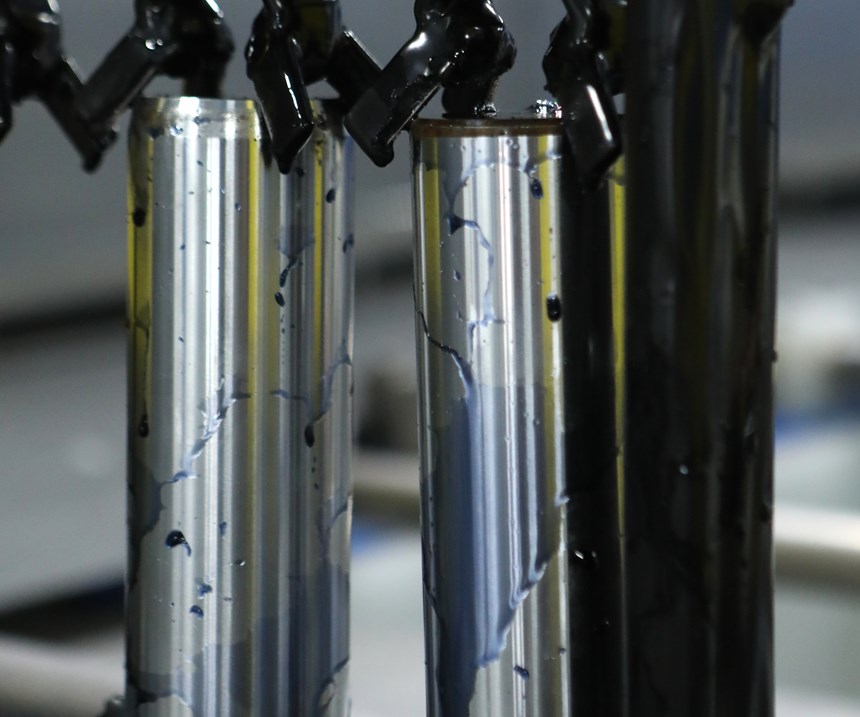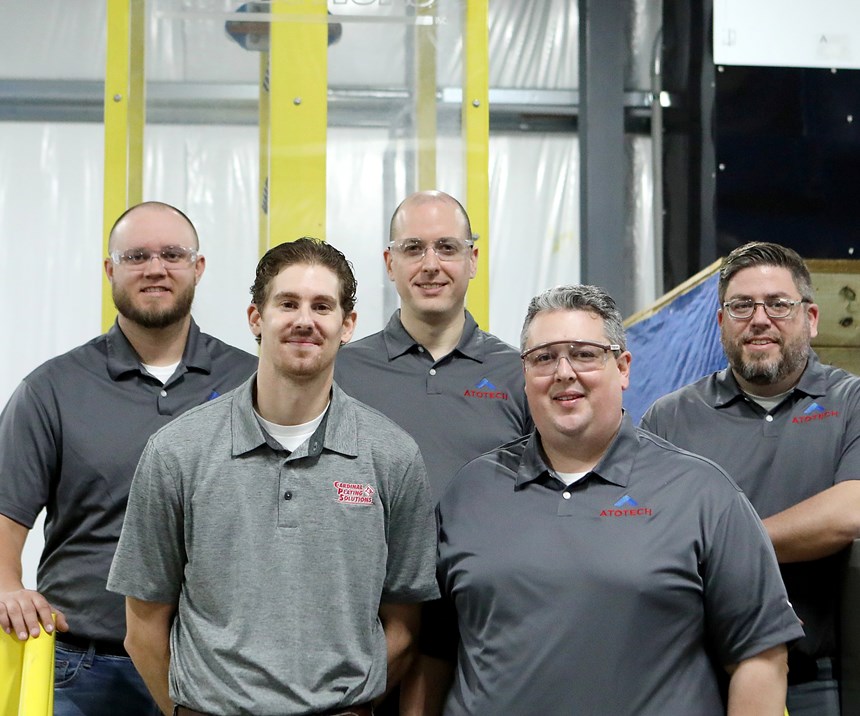Drive about 200 miles west of Chicago to the town of Aledo, Illinois, and you will run into what could be the future of electroplating. In December, Cardinal Plating Solutions in Aledo installed what it says is the plating industry's only full-scale, production-ready functional trivalent chrome line. It uses Atotech’s BluCr chemistry, which has a Vickers Pyramid Number deposit hardness in line with industry requirements, but also the potential of increasing through post finishing.
Chris Shull, Cardinal’s president, says the company spent more than a year working with Atotech on planning and installing the line after deciding they could branch out to grab new business from companies that need a hard-chrome application.
“We’ve come across several local opportunities with customers who have a demand for chrome,” Shull says. “But we didn’t want to mess with the obligations that come with a traditional hexavalent deposit.”
Caleb Morrison, Atotech’s North American business development manager for functional chrome and electroless nickel (EN), was already working with Cardinal on EN chemistry and told Shull about the new BluCr chemistry they had been fine-tuning and running on a beta site for three years.
That led to testing parts at Atotech’s Rock Hill, South Carolina, research facility, all of which led to great results for Cardinal and the expansion of their facility to accommodate a new line.
“This is the first North American production installation,” says Caleb Morrison, Atotech’s North American business development manager for functional chrome and electroless nickel. “We truly think this will be industry shifting.”
Automotive, Hydraulics, Construction and Agriculture
John Kochilla, Americas vice president and managing director for Atotech North America, says the BluCr product is ideally suited for automotive applications, hydraulic rods and in the construction and agriculture industries.
“Significant monetary and time investments were made in the development of this technology. The time portion can be measured in decades not just in years,” Kochilla says. “It is important that the market understands that, as a part of our development process, end users have already field tested components with BluCr. Process validation is a routine step in our product development process, benefiting our customers and end users.”
Kochilla and Atotech were at the forefront decades ago in helping to replace hex chrome in corrosion-resistant passivation applications for zinc and aluminum, decorative-plated finishes and, more recently, in plating on plastic pretreatment. Naturally, the request to replace hex chrome in the functional/wear-resistant plating applications have been on the horizon for many years, especially with regulators and OEMs calling for the move from the product.
“We had to do our diligence and, with many development programs, there were a lot of rabbit holes we went down that bore no fruit for us,” he says. “This is a product the industry is calling for and we’re happy to put it into the hands of people in the market who can build or grow their business with it.”
Morrison says the low friction and good wear-resistance properties of BluCr make it simple to replace hex hard-chrome coatings for many applications. He says it utilizes a nickel underlayer that helps the new chemistry easily outperform the corrosion resistance of single-layer, hex-chrome finishes.
Cardinal Plating Solutions hosted an open house for existing and potential customers to show off the new facility and line.
“Being in the heartland of the country, most of the demand we are seeing for this product is being driven by agriculture and construction,” Shull says. “We already have relationships with John Deere and Caterpillar in electroless nickel, and they and others are the ones who have voiced an interest in getting a local chrome supplier. We feel the work is there, and now we have an opportunity to go after it.”
For information, visit cardinalplatingsolutions.com and atotech.com.
Related Content
Trivalent Chrome Overview
As the finishing industry begins to move away from the use of hexavalent chromium to trivalent chromium, what factors should finishers consider as they make new investments? Mark Schario, chief technology officer for Columbia Chemical offers a helpful overview of this complicated topic.
Read MoreChicago-Based Anodizer Doubles Capacity, Enhancing Technology
Chicago Anodizing Company recently completed a major renovation, increasing its capacity for hardcoat anodizing and Type II anodizing.
Read MoreFinishing Systems Provider Celebrates 150 Years, Looks to Future
From humble beginnings as an Indiana-based tin shop, Koch Finishing Systems has evolved into one of the most trusted finishing equipment providers in the industry.
Read MoreA Smooth Transition from One Anodizing Process to Another
Knowing when to switch from chromic acid anodizing to thin film sulfuric acid anodizing is important. Learn about why the change should be considered and the challenges in doing so.
Read MoreRead Next
Education Bringing Cleaning to Machining
Debuting new speakers and cleaning technology content during this half-day workshop co-located with IMTS 2024.
Read MoreA ‘Clean’ Agenda Offers Unique Presentations in Chicago
The 2024 Parts Cleaning Conference, co-located with the International Manufacturing Technology Show, includes presentations by several speakers who are new to the conference and topics that have not been covered in past editions of this event.
Read MoreEpisode 45: An Interview with Chandler Mancuso, MacDermid Envio Solutions
Chandler Mancuso, technical director with MacDermid Envio discusses updating your wastewater treatment system and implementing materials recycling solutions to increase efficiencies, control costs and reduce environmental impact.
Read More






















